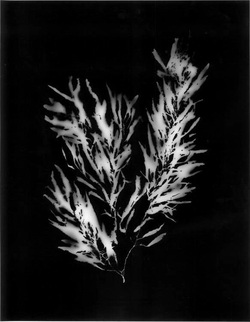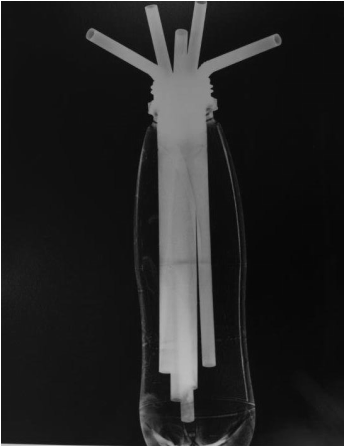Photograms
A photogram is an image made without a camera by placing objects directly onto the surface of some form of light-sensitive material for example, photographic paper then after this process exposing it to light to create a unique effect.
The usual outcome is a negative shadow image that shows variations in tone however this is dependent on the transparency of the objects that have been used within the set up. Areas of the paper that have received no light appear white and those exposed through transparent or semi-transparent objects appear a darker shade of grey.
The technique is sometimes referred to as camera-less photography. It was primarily used by Man Ray in his exploration of rayographs. Other photographers who have experimented with the technique include László Moholy-Nagy, Christian Schad, Imogen Cunningham and Pablo Picasso.
Man Ray produced major works in a variety of media but considered himself a painter above all. He was best known for his photography, and he was initially a fashion and portrait photographer. Man Ray is also well known for his work with photograms, which he called rayographs in reference to himself. Ray made his photograms without a camera by placing objects-such as the thumbtacks, coil of wire, and other circular forms used here-directly on a sheet of photosensitized paper and exposing it to light. Hovering between the abstract and the realism outlook, the photograms appealed and inspired Surrealist writers and painters who followed his works.
Van Ray has created many photograms in his lifetime and considers himself to be an expert in still life images, examples of his work can be seen above displaying a plant and a composition of forks in the other. the use of still life in plant form and everyday objects makes his work more diverse and interesting for the onlooker to see what effect he can create when using different mediums. In the first image Ray creates a simplistic photogram displaying a plant, even though its simplistic it still creates different shadow and highlight displaying the variation in tone on the image outcome. in the second photogram you can see a composition of forks again creating a variation of tones by nightlight and shadow but also the transparent effect on a selection of the torches creates a 3d effect and illusion to the photogram for the onlooker. although the second image wasn't as simplistic as the first it demonstrated the diversity of Ray and how he can experiment and adapt to the subject that he is working with in order to create his works.
Another photographer includes Floris Neusüss who was dedicated his whole career to studying and experimenting with the photogram. Alongside his work as an artist, he is known as an influential writer and teacher on camera-less photography.
His works often are contrasting imagery such as black and white, shadow and light, movement and stillness, and the translation of three dimensions into two.
Neusüss created a unique outlook to the photogram process, in both scale and visual treatment, with the whole-body photograms that he exhibited in the 1960s. Since, he has consistently explored the photogram and the technical possibilities that are combined with it.
Floris Neusüss uses his photograms to display still life in human form or portraiture as some of his photograms could be argued. His unique way of photograms display his works as very abstract and unique, this can be seen above in the two images that he has produced. The left photogram displays a simplistic silhouette of a person the small amount of tonal difference around the outline of the person gives the image a 3d effect like Van Ray in his photograms. However the second photogram depicts an abstract human figure nearly unrecognisable compared to the first photogram this image doesn't contain as much tonal variation as the previous so it doesn't have a 3d or realistic feel to the image however the attention of the onlooker is definitely focused on the abstraction displayed in the image itself.









